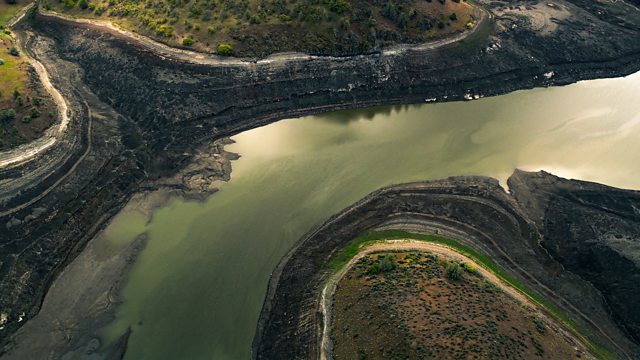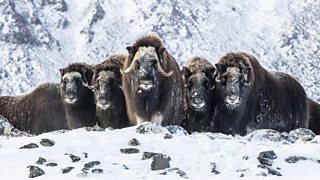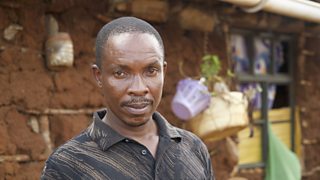
Restoring Our Rivers
Liz Bonnin and Ade Adepitan investigate two ambitious river restoration projects: in the US, the largest dam removal in the world, and in France, the colossal detox of Paris’s River Seine.
Our Changing Planet is an ambitious natural history series examining the issues facing the earth’s most threatened ecosystems, and meeting the scientists and local conservationists fighting to make a difference.
In the fourth year of this seven-year project, we investigate efforts to protect and revive our dying rivers. Two ambitious river restoration projects are aiming to bring life back to the Klamath in northern California and the Seine in Paris, France.
Globally, two billion people rely on rivers for drinking water, and a quarter of the food we eat depends on them. But our rivers are in deep trouble – pollution, water extraction and huge dams blocking their flow have all taken their toll on freshwater species.
Liz Bonnin returns to northern California, where the largest dam removal project in US history is aiming to resuscitate the River Klamath. Historically, it had one of the largest salmon runs on the West Coast, but from the early 1900s, a series of giant dams were built to provide hydroelectric power. These dams blocked salmon from reaching their spawning grounds and stopped nutrients reaching downstream, and toxic blue-green algae flourished in the warm reservoir. The effects were disastrous. The whole ecosystem was damaged, and numbers of Chinook salmon fell by more than 90 per cent.
This had a profound impact on members of the local indigenous tribes, such as the Yurok and the Karuk, who have lived alongside the 254 miles of the Klamath for thousands of years.
Now, after decades of campaigning, the dams are being demolished. Liz joins Mark Bransom, CEO of the Klamath River Renewal Corporation, the organisation tasked with getting rid of the dams and reviving the river. They witness the largest of the dams being torn down with diggers and dumper trucks – the aim is to remove all trace of the dam within four months, in time for the salmon returning to breed upstream in the autumn.
A few miles upstream, conservationist M Sanjayan is on site when another dam, Copco No 1, begins to be blasted apart with dynamite. Sanjayan has known this landscape for 30 years, but now it’s about to be completely transformed. The vast reservoir the dam created has been drained, and it’s demolition day – a nail-biting time for all involved.
The empty reservoirs behind the dams are now vast, muddy wastelands that need to be turned into vibrant riverside habitat. Liz gets hands-on with the revegetation crew, who are working to plant native species that will stabilise the soil and stop it washing into the river.
The vast landscape is changing fast, so to get a bird’s-eye view, Liz takes to the air with engineer and Yurok tribal member Felicity Cross. Using a plane equipped with a hi-tech laser system, Felicity maps and monitors how the river is evolving and carving its way back to its old course.
In France, journalist and Paralympian Ade Adepitan investigates the colossal detox of Paris’s iconic River Seine. Urban rivers are amongst the most polluted on earth, and Ade heads underground to see the source of the problem – Paris’s ageing sewer system. For decades, raw sewage flowed into the Seine, killing off aquatic wildlife. And with levels of E. coli over 500 times the safe limit, no-one would want to swim in it.
When Paris won the bid to hold the 2024 Olympic and Paralympic Games, the mayor pledged to clean up the river and make it safe to swim in. A mega-engineering project is under way to stop human waste ending up in the Seine. It’s not only elite Olympians that will benefit – ahead of the Olympics, hundreds of open water swimmers took part in a 5km race. Inspired by these amateur enthusiasts, Ade takes the plunge and goes for a swim himself, despite the water being a chilly 13 degrees.
Scientist Fabien Esculier is spearheading a solution that could reduce the pressure on sewer systems and make use of our waste. Fabien takes Ade to the European Space Agency to see some very special toilets designed to separate and collect urine so that it can be used as agricultural fertiliser. Fabien estimates that if all the urine of Paris could be collected, it would be enough to grow the grain for 25 million baguettes a day!
Wildlife should thrive in a cleaner Seine too – at one point, the river was so polluted, it was declared biologically dead. Ade finds out if the clean-up efforts have paid off. He joins fish biologist and keen angler Bill François, who is head of the local angling association that oversees the health of the river. They’re hoping to hook the largest freshwater fish in Europe, a giant wels catfish, a species that is at the top of the food chain and a good indicator of a healthy river.
These pioneering projects offer solutions and hope for other rivers around the world. If the Seine, surrounded by a busy capital city, and the Klamath, devastated by a century of damming, can both be brought back to life, then there’s no reason why it can’t be done elsewhere.
On TV
Credits
| Role | Contributor |
|---|---|
| Presenter | Liz Bonnin |
| Presenter | Ade Adepitan |
| Presenter | M. Sanjayan |
| Production Manager | Helen Wallbank |
| Executive Producer | Rosemary Edwards |
| Series Producer | Joanne Stevens |
| Director | Caroline El-Marazki |
Broadcasts
- Sunday 19:00
- Fri 25 Apr 2025 00:10���˿��� One except Northern Ireland, Northern Ireland HD, Scotland & Scotland HD
- Fri 25 Apr 2025 00:55���˿��� One Scotland & Scotland HD only
- Sat 26 Apr 2025 00:30���˿��� One Northern Ireland & Northern Ireland HD only


